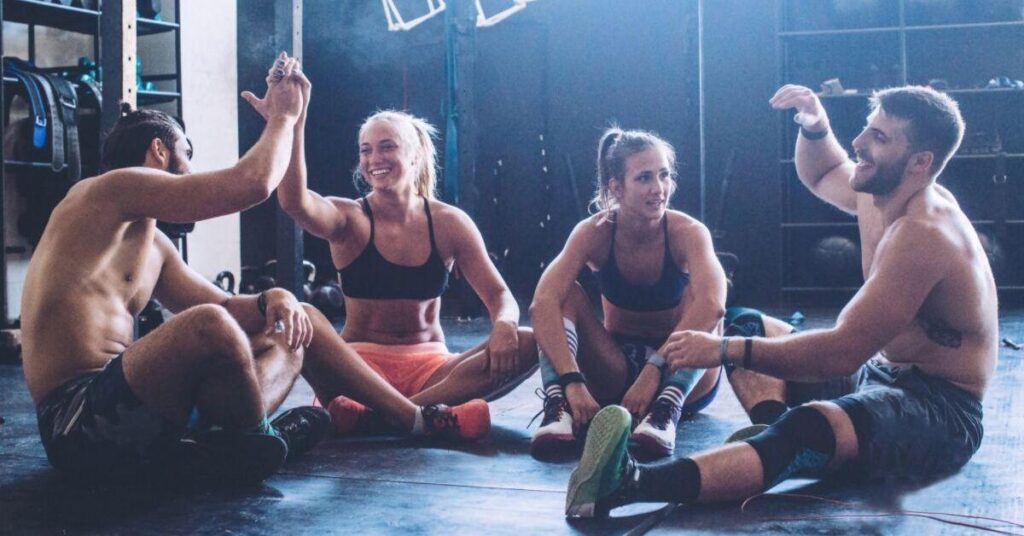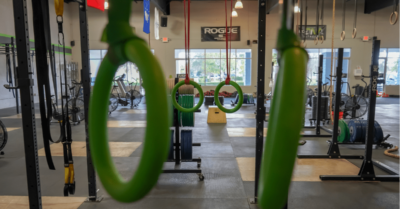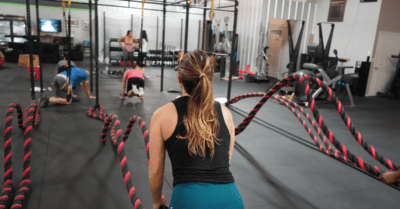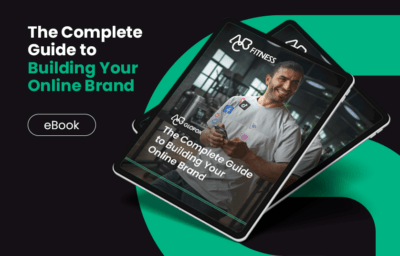Facebook is arguably one of the largest social media platforms. Every day there are 1.49 billion active users, and over a billion of these are mobile-only users. Globally, 26.3% of the population uses Facebook. The key to Facebook advertising is showing the right message to the right people, which is where your Facebook marketing strategy comes in.
About 40% of Facebook users don’t like brand pages; this means that paid advertising is the only way to reach them. We’ve spoken before about creating a killer Facebook Ad campaign for your studio, and knowing how to define your audience on facebook is integral in ensuring your content gets seen by the right people. Facebook’s advanced targeting helps you to cut through the noise and find the right people for your message. In this article, we will discuss how you can define your target audience to perfect your marketing strategy and find your ideal customer.
How do you find the right audience?
The ‘market’ that you’re trying to reach with your advertising is known as your “audience” on Facebook. Facebook has three primary audiences which are saved, custom, and lookalike. You can use the Audience Manager tool to create the perfect target audience for your campaigns. Sometimes a Facebook audience can have millions of users. Unless you have an endless budget, you need to narrow down your audience to the people that are most likely to convert.
Saved Audiences
With Saved Audiences, you can define your target by choosing people’s location, interests, age range, gender, and more. This allows you to do location-based targeting as well as user demographics, behaviors, or interests. You can create Saved Audiences in both the Audience Manager as well as during the campaign setup.
Custom Audiences
Facebook Custom Audiences are different from Saved Audiences as they allow you to reach out to past visitors on your website, those that have engaged with your brand through an app and more. There are a few different ways to create Custom Audiences. You can either use your existing customer files or use audiences based on your website traffic.
To create audiences based on website traffic, you’ll need to have the Facebook Pixel already installed on your site. You can also create audiences based on app activity and engagement like people who have visited your Facebook page or sent you a message. Custom Audiences are usually very high-value, therefore making them more likely to convert.
Lookalike Audiences
Lookalike Audiences aim to target people who are similar to your existing customer base, making them high-value similar to the Custom Audience, and likely to convert. To create a Lookalike Audience, you will first need to have built a Custom Audience. You then select a target country and a percentage of targeted users who you would like to see your ad. This type of audience helps you to extend your reach during campaigns so that your message is only put in front of people that are likely to be interested in what you have to offer.
What Can You Target on Facebook?
There are countless ways that you can target users on Facebook. You can use a combination of targeting methods to narrow down the right audience and pinpoint the people most likely to be interested in your ad.
Location
As a fitness center like a gym or yoga studio, the location of the people you’re trying to reach is essential. You can target users with general location requirements, such as living in a specific zip code or country. You can then narrow this down to everyone in that location who has like a yoga or fitness page.
Interests
Interests are beneficial in defining your target audience. For example, if you’re a yoga studio selling clothing and yoga mats, you would target users who have liked yoga, Alo Yoga, and fitness and wellbeing. Interest-based targeting allows you to pinpoint users with those specific interests. Facebook offers up suggestions for interests and other related topics.
Demographics
You can target users through a ton of different demographics, including age, gender, marital status, language, life events, and more. From your existing audience research and target market, you should have an idea of who your ideal customer is. Facebook has a number of demographic options that narrow down your audience further.
Engagement
When someone comments, likes, follows you or your business page on social media or clicks on any call-to-actions, that counts as engagement. If someone has recently liked or commented on your Facebook or Instagram post, you can get Facebook to target them with your ads. This is one of the ways you can create a Custom Audience.
Behaviors
Unlike interests, behaviors focus on targeting people using things like recent purchases, website visitors, or personal histories. You can use the Facebook Pixel to target users which is usually a more profitable way to use Facebook ads. The Pixel is a piece of code that tracks users’ behaviors. For example, if a user had just visited your gym’s contact page on your website or was about to purchase fitness wear but for some reason didn’t, then Facebook would show an ad to them.
Automatic Optimisation
Facebook offers another option on top of using demographics and interests to target the right customers. With this, Facebook automatically optimizes your audience for you. Let’s say you created a new ad campaign to target new parents that have recently joined a gym. Facebook might optimize this to target more new moms than dads as new moms tend to have a higher click-through rate.
How to Define Your Target Audience on Facebook
Your target market is the specific group of people that you are trying to reach with your marketing message: The people who are most likely to sign up to your gym membership or visit your new yoga studio. The more clearly defined this group of people is, the better you can understand them and improve the chance of converting them. Audience research and getting to know your target audience is the key to defining your strategy and narrowing your audience.
The Top 10 Barriers
Slowing Your Fitness
Business Growth
Discover more Look at Data on Your Current Customers
The first step in figuring out who your audience is and the people most likely to buy your service or product is to look at your current customers. Identify who is already using your services so you can start defining their characteristics. This will allow you to go after a similar audience type. Whatever information you have available on your current customer base, you can use it to track averages and trends. Possible data points to consider include:
- Age
- Location
- Interests
- Spending power
- Languages
Over the past several years, Facebook marketing has undergone massive changes that have transformed the way marketers can use the platform. Whether you’re new to Facebook advertising or looking to increase your current knowledge, here are some excellent resources to check out.
- Ultimate Guide to Facebook Marketing by Perry Marshall, Keith Krance, & Thomas Meloche – this book teaches you how to find your ideal audience and create well-crafted targeted ads for your business.
- The Complete Guide to Facebook Marketing by Brian Meert – this is a great beginners’ guide for small business owners and helps you set up and run your first Ad campaign. There’s plenty of real-world examples that you can apply to your own business.
Use Website and Social Media Analytics
When analyzing your customer base, social media analytics is a great way to fill in any missing information. It also helps give you a greater understanding of who may be interacting with you on social media but may not be a customer yet. To find out more information about your current following, Facebook’s Audience Insights offers a much deeper insight, including what devices they use and the other pages that they like.
Even if your audience is already on target and the ad is delivering well, Audience Insights gives you the option to find loads of other related interests that allow you to scale your ads and expand your campaign. You can use your website to find certain people and target those that have visited your website but haven’t signed up for a class or perhaps have a purchase sitting in their basket but haven’t gone through with the final payment.
Check out the Competition
So, now you have a greater understanding of who is already engaging with your business and brand, it’s time to look at who is interacting with your competition. Investigating the competition can help in several areas, including how they are positioning themselves and the market they are targeting. Are they advertising to a target market you haven’t previously thought of?
Although you won’t be able to get a detailed analysis of the people interacting with your competition, you can get a general idea of the type of people they are targeting. Through this research and analysis, you can find out where their marketing efforts are most effective and how you can use this in your own business.
Know Your Audience Personas
Marketers use to target their audience based solely on demographics like age, gender, and location. While this is a great place to start, it’s not enough to land successful conversions in today’s digital marketplace. To drive results, you need to understand your audience personas fully. By learning about your audience personas, you will find out where they like to interact with content and the type of content and topics that stand out and resonate with them the most.
Pushing ads that are irrelevant to your audience comes at a cost. Users don’t want to see irrelevant ads, and this could end up hurting your brand’s image. Analyzing behavior and interests give you the ability to create personalized content that can optimize your Facebook ad costs. When looking at personas, you could also look at their entire social media activity and any influencers they may follow.
Where do Your Customers Hang Out Online?
Your audience research and target market should be able to tell you where your customers like to hang out online. Are they on Instagram or Facebook? Do they prefer to scroll on a desktop or only use their mobile? When you’re thinking about where your potential customers will see the ad, you need to consider the structure of the ad. In January 2019, a staggering 96% of users accessed Facebook through mobile devices.
If you’re targeting mobile-only users, then the ad needs to be optimized for mobile use. If people are watching on a smaller screen, then the text needs to be large enough to read easily. In the Facebook Ads Manager, you can control where your ad will appear under “Placements.” This is where you choose where your ad will show up.
Test Facebook Ads on Your Target Market
Once you’ve put together your audience research and defined your target audience, it’s time to test all your hard work. The first step is to create ads that specifically target the audience that you have defined with a well-thought-out ad creative. You can use the information you have to create Custom Audiences so that you can extensively target the right people.
Keep track of your ads and look at measurable results so you can see how successful the ads are. Once you’ve nailed your target audience, you can then begin to use A/B split testing. This type of testing allows you to pinpoint even further the targeting methods that work and those that don’t. This might mean having a different creative approach or using a video ad instead of a photo. Check out this podcast by The Digital Marketer, which explains how you can optimize your Facebook ads with split testing and dynamic creative.
Keep Updating Your Audience Research
Once you’ve started pulling together your audience research and created your target audience for Facebook marketing, you will continue to gain further insight as time goes by. The results of ad testing and feedback from customers may mean you need to revisit and update your audience research. Always incorporate lessons that you’ve learned and update your audience research to make sure it describes exactly who you are targeting and the most valuable potential customers.
In Summary
Defining your target audience is one of the most important tasks in marketing. With numerous tools available through Facebook to give you audience insights, you can get your message in front of the right people. By understanding both your existing and potential customer base, you can make your advertising budget reach further and publish ads to users who are most likely to convert.
Table of contents















